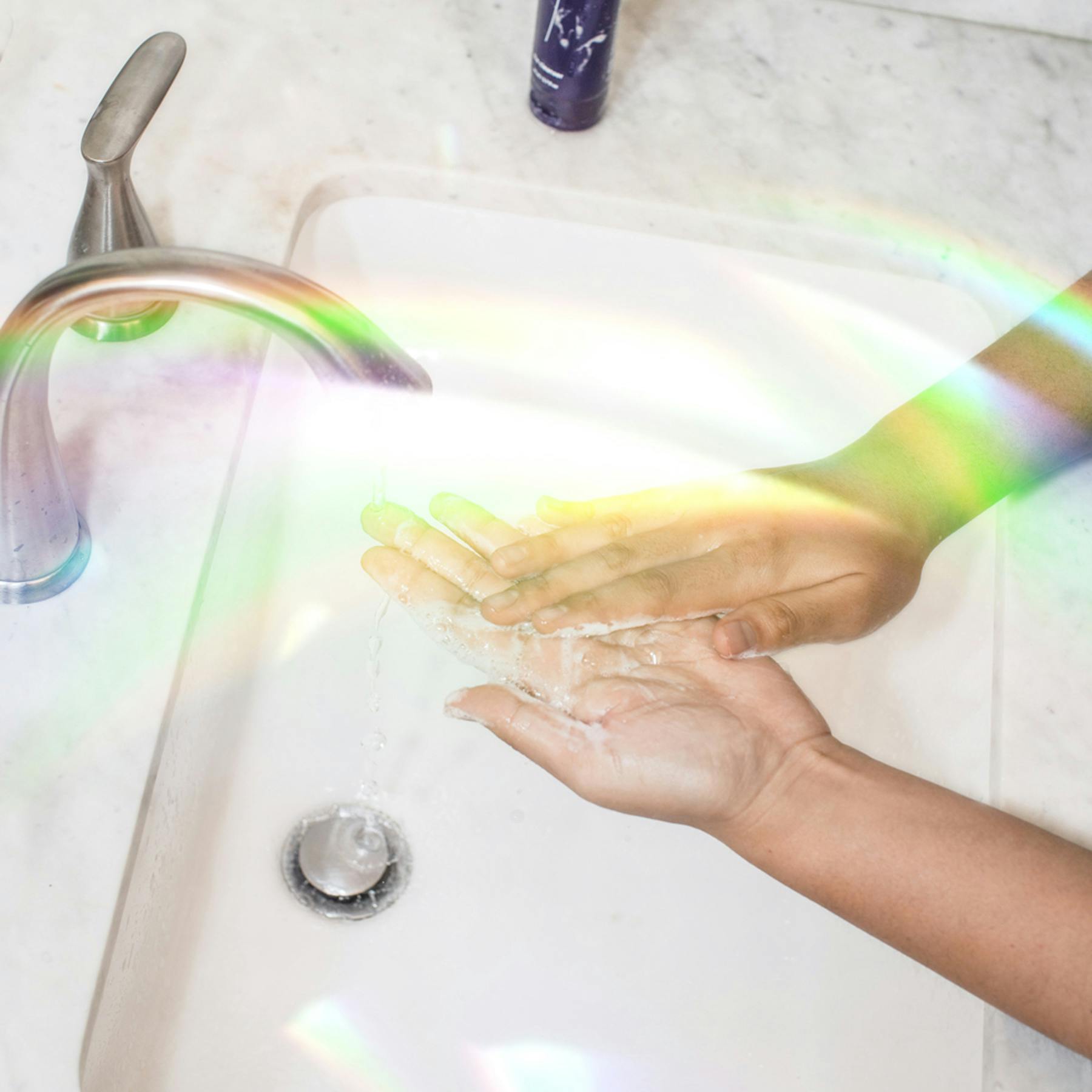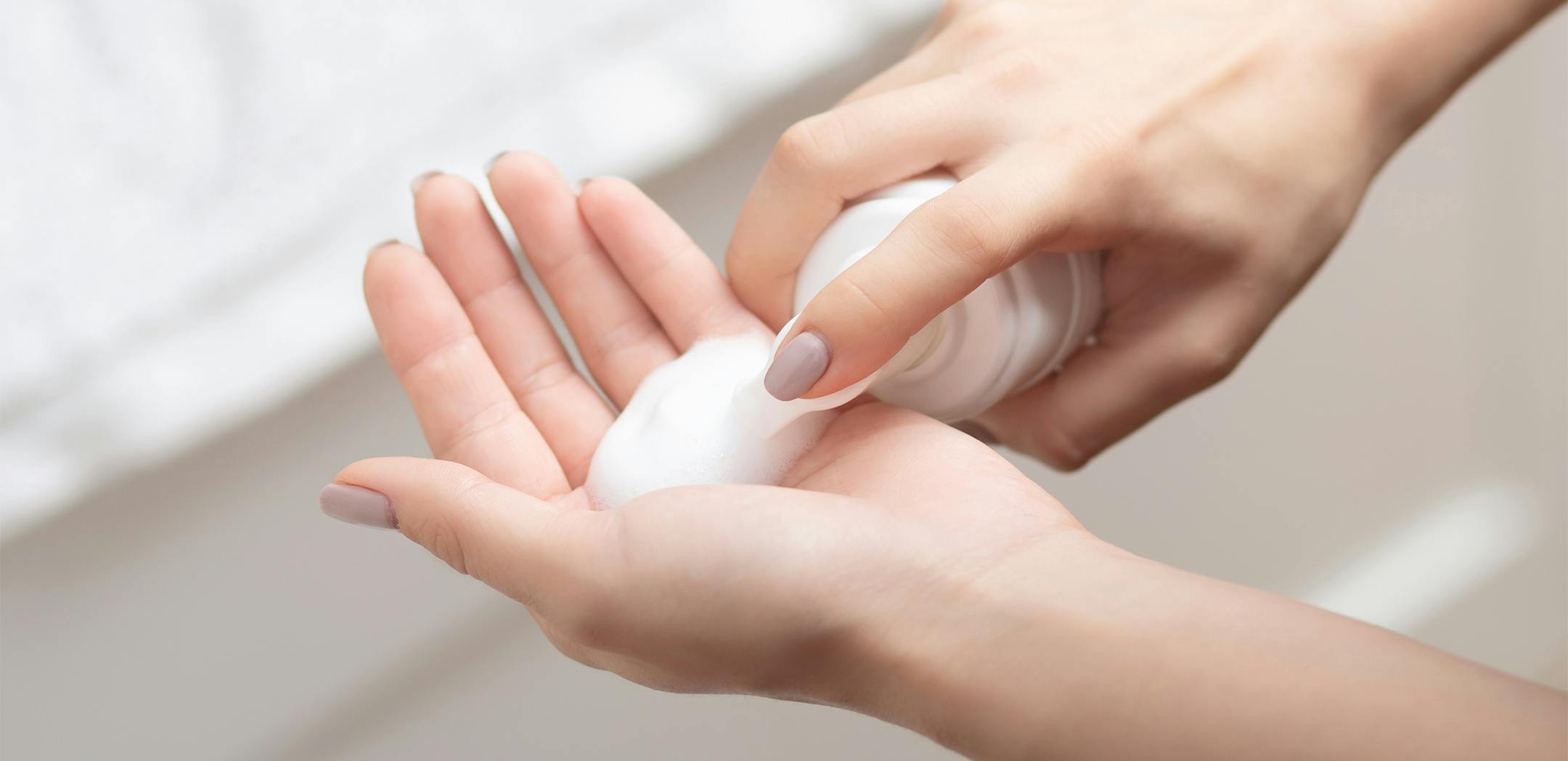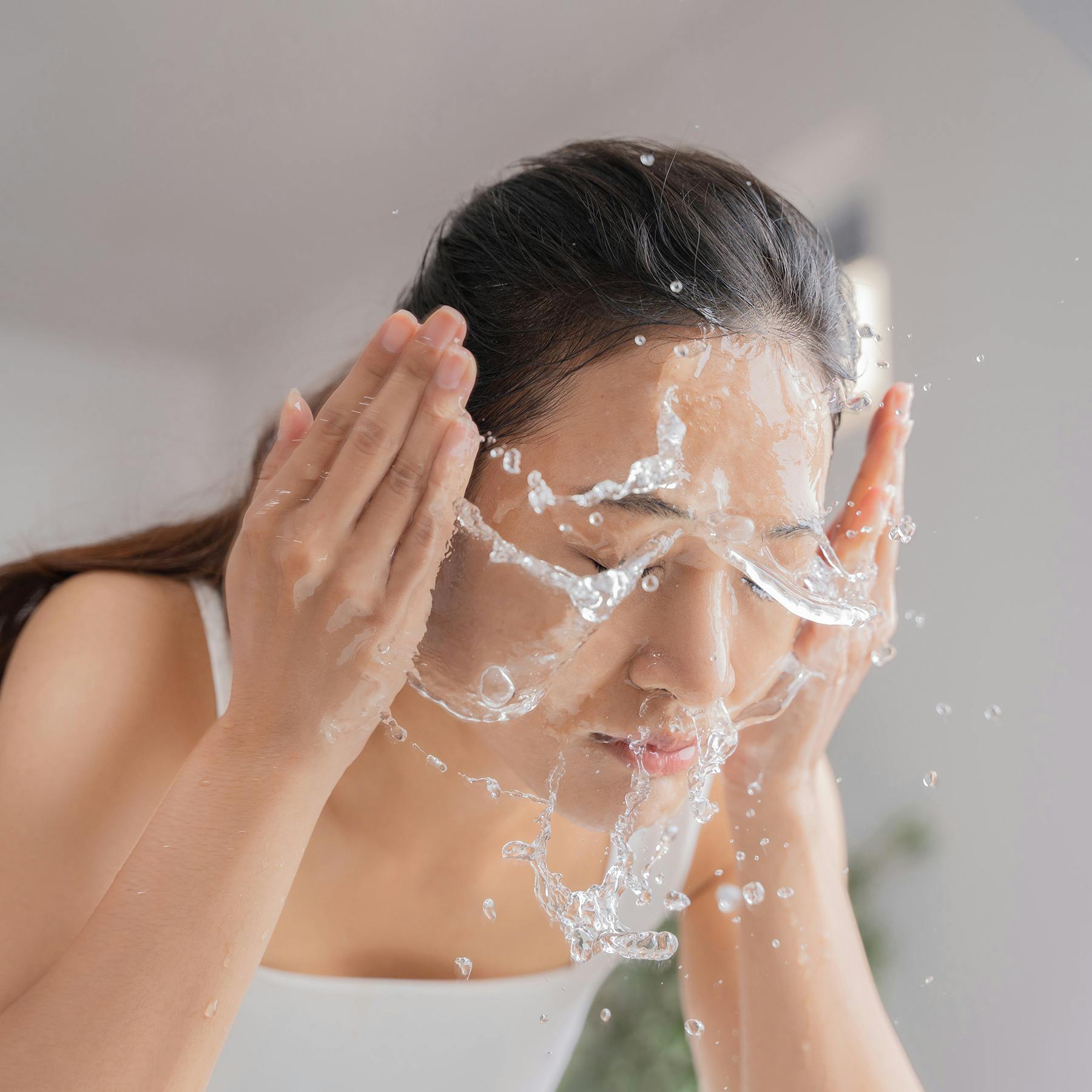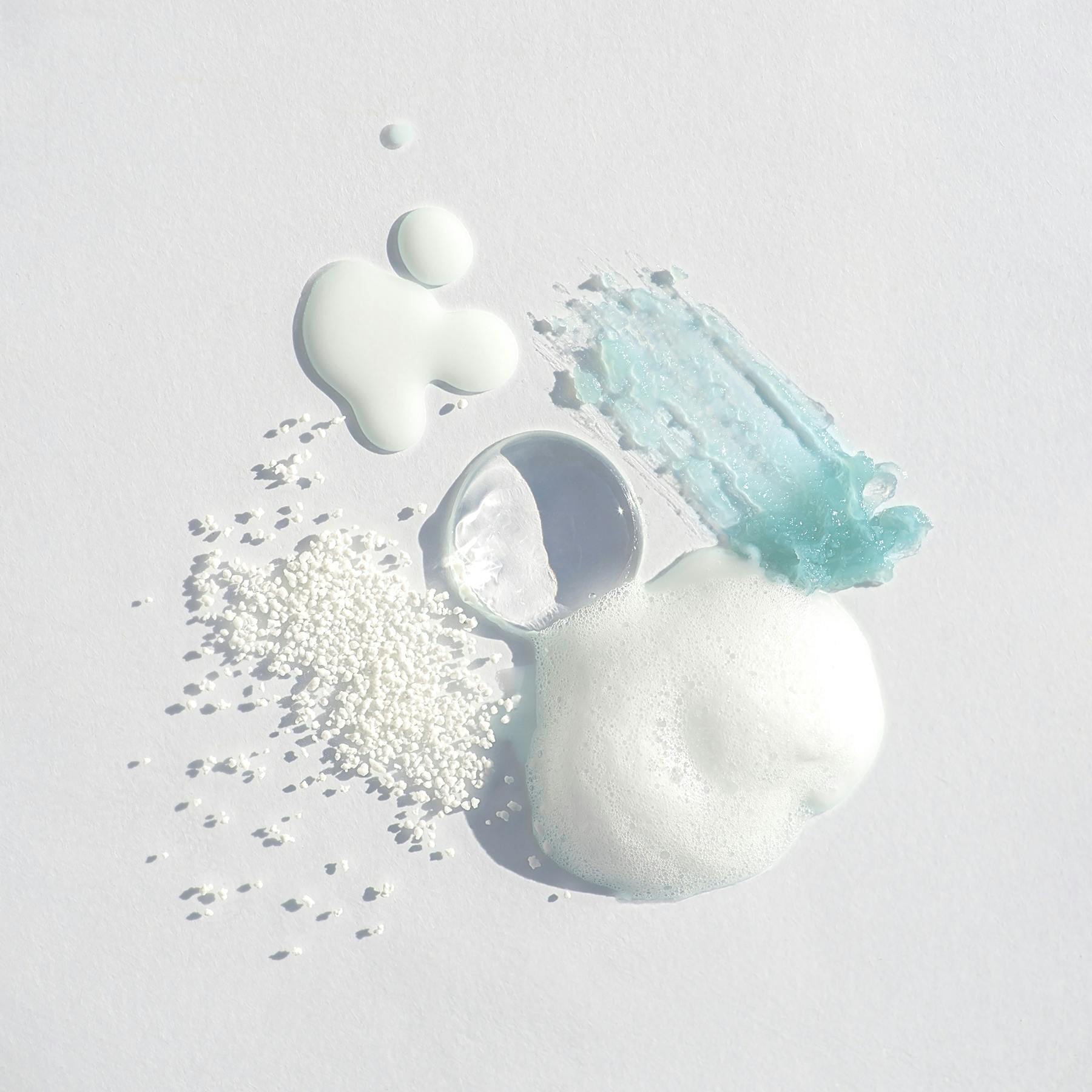Skin Care Cleansers: A Beginner’s Guide
Think about all the things that may come into contact with your skin each day. From dirt and pollution to sweat and sunscreen, our skin acts like a sponge and absorbs it all.
But washing away the day involves more than just a splash of water. In fact, gently removing unwanted grime, oil, toxins and dead skin cells is one of the most important steps in your daily face routine.
We get it though. There are endless oils, creams and foaming liquids to choose from when you are shopping for a facial cleanser. So, our team of beauty gurus have done the hard work for you.
Keep reading this guide to skincare cleansers to discover everything you need to know about different types of cleansers, how they work and which ones you should consider as part of your skin care regime. We have also given a few cleanser tips to help you when it comes to finding the perfect one.
So what is a facial cleanser?
The first step in the perfect skincare routine is pretty simple. It involves using a facial cleanser to remove unwanted substances (like sweat, dirt and oil) from our skin.
The way a cleanser works really depends on the ingredients in the bottle. The most common approach is to use surfactants (such as sulphates) which clean away excess oil, makeup, acne-causing bacteria and everything in between.
But there's a catch; ingredients like sulphates can strip away the skin's natural, healthy oils, too. This isn't ideal, particularly if you're already experiencing really dry skin or trying to soothe sensitive skin.
Instead, more natural cleansers are becoming increasingly popular - such as cleansing oils - which contain much gentler forms of surfactants (often packed with superfood ingredients like argan or coconut oils). The benefit of using a gentle cleanser with moisturising oils is that not only will they cleanse, but they will also help to restore your skin's natural balance at the same time.
We will go into the types of cleansers you can add to your skincare routine. However, if you want to find the perfect cleanser for your skin type, head to the Ask Bella Skin Quiz to find out exactly what your skin needs!
Why is a face cleansing routine important?
Whether you're looking for a lavish 10-step beauty ritual or a speedy skin care regimen, face cleansing will always be an essential step of any skin routine.
That’s because properly cleansed skin is key to getting the rest of your skincare products (from toners to moisturisers and even SPF) to work effectively.
So, what are the key benefits of a face cleansing routine?
- A good cleanser will remove makeup, SPF and ageing impurities (such as dirt and pollution which clog pores)
- They will moisturise and replenish your natural skin barrier and boost hydration
- Skin concerns can be addressed (from acne to hyperpigmentation)
- Fresh, healthy skin can be created by supporting the skin's natural exfoliation
- Active ingredients (such as hyaluronic acid, vitamin e or salicylic acid) can assist with some skin issues and provide antioxidant protection
How often do I need to cleanse my skin?
While everyone’s skin is different, dermatologists typically recommend that we wash our face twice a day (morning and night).
And unfortunately, water alone won't make the cut when it comes to cleansing your skin.
Think about it like this: say you’ve just finished cooking dinner and you need to clean up a dirty pan. Washing up with water alone won’t dissolve the oil and grime on the pan. That’s why you need to use detergent to get the pan sparkling again. And the same logic applies to washing your skin.
But cleansing too often (or using the wrong cleanser for your skin type) can cause your skin to become dry, irritated and unbalanced. So, it’s best to limit cleansing to a maximum of twice a day, as part of your weekly skin care routine.
What is double cleansing all about?
If you're trying to cleanse away heavy makeup or lots of SPF, sometimes a quick face wash isn't enough. Some of the toxins and pollutants that can cause clogged pores and get into the deeper layers of your skin, may remain trapped there if they're not cleansed thoroughly.
And that’s where a thing called double cleansing comes in.
As the name suggests, it involves washing your face twice: once with cleansing oil or balm to remove the top layer of makeup, sunscreen and pollutants. Then, you’ll do another cleanse with a water-based cleanser to get deeper into the pores and remove things like sweat and dirt.
Not only does this method give your skin a thorough clean, but it also prepares it for your nighttime skincare routine, ensuring your skin will get the maximum benefits from your facial serums or face masks, while you enjoy your much-deserved beauty sleep.
What type of skin cleanser formulas exists?
As you’ve probably guessed, there are stacks of different skin cleanser formulas to choose between. So, let’s walk you through the most common types of cleansers and what to expect from each to design your perfect skincare routine.
Cleanser type: foaming liquid
If you're on the hunt for a lightweight cleanser that will create a foamy later when added to water, a foaming liquid cleanser might be the right skin care product for you.
This formula uses surfactants that can offer a subtle exfoliation to the skin while supporting hydration and skin renewal.
Foaming liquid cleansers are usually a good option for people with combination skin or oily skin types, as they provide a lightweight clean and are packed with oils to moisturise and cleanse the skin at the same time.
Cleanser type: cream cleanser and cleansing milk
If you’re looking for a gentle, nourishing cleansing experience, creams are likely to be a winner. This cleanser formulation doesn’t provide the typical lather of a foaming cleanser, but still does a great job at removing makeup, dirt and unwanted toxins.
Many brands are also coming out with cleansing milk, which is another gentle option that soothes and hydrates the skin while washing away impurities.
Cleansing creams and milk tend to be a great option for dry skin and treating other sensitive skin symptoms, but can also be used as part of a routine for those with acne-prone skin (as the gentle formulas can help support skin recovery).
Cleanser type: oil cleanser
While it might sound counterintuitive to use oil to cleanse your skin, remember this: oil dissolves oil.
The trick to getting oil cleansers to work their magic is to use them on dry skin to break down waterproof makeup, sunscreens and dirt. Then, use warm water or a soft muslin cloth to gently wipe everything away.
Oil cleansers are great for dry and sensitive skin types as these formulas are lightweight, moisturising and gentle on the skin.
Cleanser type: melting balm
If you’re a frequent traveller or often on the go, cleansing balms are a perfect addition to your skincare routine.
Just like a bar of soap, these melting balms produce a thinner cleanser when mixed with water and work well for all skin types.
Plus, melting cleansing bars are fantastic for removing thick or stubborn makeup without being harsh or abrasive on the skin.
A melting balm is a great option for normal skin however there are more and more coming on the market (you may even find some that treat oily skin, fine lines and even mild acne).
What are some of the common active ingredients found in cleansers?
When it comes to choosing the right cleanser you need to think about the ingredients you would like to use or avoid. Some active ingredients may play a crucial role in treating specific skin concerns however if you're after a more natural approach to cleansing, you may wish to find an alternative. Here are some common ingredients you may find on the labels:
Salicylic acid (SA)
(Sometimes known as chemical exfoliants) - work wonders to break down excess oil, dead skin cells and clogged pores that lead to breakouts
Alpha hydroxy acids (AHAs)
One of the most popular brightening ingredients recommended for reliable exfoliation in modern skincare. They act on the surface of the skin improving radiance, texture and tone
Beta hydroxy acids (BHAs)
Work on the surface of the skin and deep in the pores and are oil soluble, meaning they are great for acne or congestion-prone skin
Lactic acid
Naturally found in milk as well as synthetically produced, this wonder ingredient can be used to exfoliate the skin, lightening dark spots and improving fine lines
Hyaluronic acid (HA)
Another popular ingredients increase hydration in the skin making it appear hydrated and plumper
Green tea
Known for its anti-aging powers, people have been drinking it for years but have now discovered the benefits of adding it to skincare to improve skin texture and delay the signs of aging
Zinc oxide
Generally used to treat minor skin concerns such as burns, cuts or eczema, giving relief when it comes to inflammation and itching
Glycolic acid
An AHA is used for anti-aging, dryness, acne and hyperpigmentation
Skin care tips for smoother skin
To keep your skin glowing, it’s important to follow a consistent skincare routine that nails all of the basics. With the right cleanser, you can ensure your pores are free from toxins, dirt and impurities and are nourished with the right ingredients to keep your skin hydrated and plump.



